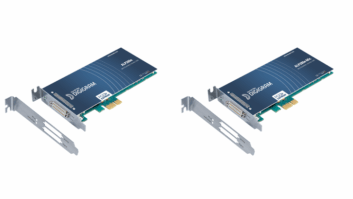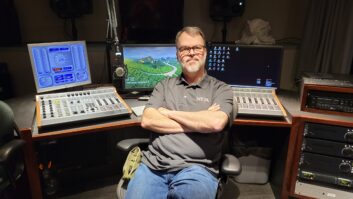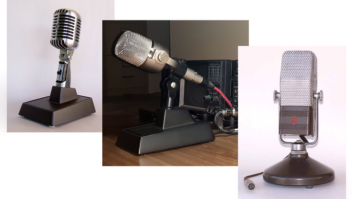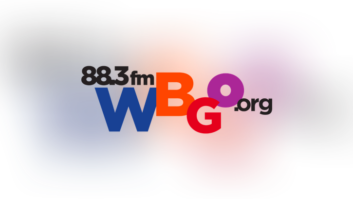HD Digital Radio boasts many new features over its analog predecessor including digital audio that is free from multipath and enhanced text displays that scroll song title and artist information.
While these are improvements upon analog radio, Europe’s attempts with digital radio broadcasts tell us that these features alone might not be enough to sway consumers to trade their existing car stereos for a new HD Radio model … until now.
In the age of home theaters in a box, DVD players in cars and 5.1 surround sound video games and movies, three entities believe surround sound is the “killer app” for the HD Radio market.
The three advocates include: a partnership of Telos Systems and Fraunhofer; a partnership of Harris/Neural Audio; and SRS Labs. Separately, these three demonstrated techniques for surround sound encoding at the spring NAB convention. SRS and Harris/Neural also each demonstrated surround sound at the Consumer Electronics Show in January.
With consumers spending money on surround products, the first challenge facing surround sound for HD Radio will be deciding on a standard of encoding before HD Radio becomes known solely as an expensive form of traditional stereo radio.
What are the differences in the three methods?
Early surround
Surround sound is a term that has been thrown around loosely since the appearance of the early multi-channel “Cinerama Sound” format of the 1950s. In current technology, surround sound typically refers to an audio system with a left, center and right speaker in front of the listener and one or more rear speakers behind the listener.
This setup often is accompanied by a separate subwoofer to handle the thumpy, low-frequency energy. You might start to see how this speaker configuration would lend itself to car audio, with speakers in the front, speakers in the rear and a subwoofer.
In an ideal world, the listener’s surround audio source would be able to address each channel of sound discretely, putting separate audio information into each speaker. Until recently, most audio sources were stereo, providing only two channels of discrete sound information to the listener.
Assuming the listener was in a “perfect” listening environment, “perfectly” centered in front of two matched speakers, sound images could be placed anywhere around that listener by playing with phase relationships between the left and right audio channels. To make the audio appear in front of the listener, the recording engineer would place the audio with equal volume, in phase in both speakers.
To make the audio appear behind the listener, the audio engineer would place the audio 180 degrees out of phase in one speaker as compared to the other speaker. An impressive effect, but listeners rarely found themselves in a perfect listening position, so the multi-directional sound was rarely heard.
To overcome this, matrix audio decoders were developed. Matrix audio decoders watch for these phase and intensity differences between stereo inputs and decode them into multiple outputs.
Probably the most recognized example of the matrix decoder was Dolby’s surround sound decoder appearing in the early 1980s. Suddenly stereo TV and videotapes had a “center” and “rear” audio channel!
The major downfall of the matrix audio decoder was that audio appeared in unpredictable areas. For example, imagine a piece of audio with a racecar driving in circles around the listener. This probably travels quite nicely around the four speakers, until you add an announcer to the mix. When the announcer starts speaking loudly in the center channel, the listener would also hear the racecar quickly bleed to the center channel, because the dominant intensity and phase was the announcer’s voice.
This problem compounded itself with more-complex sources such as music; the listener would hear various sounds out of all speakers, but it would not necessarily be an accurate representation of the original source. Another drawback, according to listeners of these decoders, was noise in the surround channels.
Often interference from poor reception, misaligned audio, etc. would appear as out-of-phase noise resulting in a loud presence in the surround channels. This problem has only become worse with the invention of compressed audio codecs.
If you’re curious what these problems sound like, try playing an MP3 through a surround sound home theater system and listen to the rear channels. You’ll quickly hear all the undesirable artifacts usually hidden by the maskers in the codec.
SRS
Recognizing the limitations of the original forms of matrix audio, SRS Labs claims to have improved upon the techniques of encoding and decoding matrixed audio. By adding high-pass and low-pass filters within its process, high- and low-frequency clusters can be steered independently to different speakers without steering the entire audio image.
SRS offers tools for the production environment including an analog and digital version of its Circle Surround encoder as well as a software plug-in that can be used with Pro Tools, or any VST-compatible editing software. SRS also offers professional-grade decoders for monitoring the Circle Surround encoded content.
SRS has partnerships with radio manufacturers such as Motorola, Kenwood, Marantz and Eclipse. Given that brand awareness is perhaps a tougher battle than technical superiority, SRS believes it has a head start in becoming an established standard in HD Radio surround sound. SRS has recently been recognized by Ibiquity Digital as one of the first compatible surround sound methods.
Neural Audio/Harris
Neural Audio offers another surround sound encoding technique that goes a step further than matrixed audio relying on multi-dimensional mathematics.
While traditional matrices only rely on two variables – intensity and phase – to describe where audio should be placed around the listener, Neural has created a “watermark” within the audio to add a third variable of steering information. This watermark allows encoded audio to be placed with a similar degree of accuracy to most discrete audio systems.
Neural offers a production environment encoder/decoder that can provide both analog and digital encoding and monitoring. It also offers the NeuStar, an air-chain processor built with surround sound and HD Radio in mind.
In addition to the standard arsenal of compressors and limiters, Neural claims its processor can detect audio that will be challenging for the HD Radio codec and correct it, thus serving to “pre-rinse” the audio and greatly reduce quantization noise. (Remember the MP3 played through the rear surround sound channels experiment as mentioned above.)
Neural Audio is a small company, lacking the name recognition carried by SRS in the consumer arena, but it claims other accomplishments that make the company a viable contender in the HD Radio surround sound race. Neural is working with OEM radio manufacturers and XM Satellite Radio to implant its technology into many new OEM stock radios to provide XM in 5.1 surround sound. Neural also provide solutions for many television networks to address 5.1 encoding challenges with HDTV.
XM featured Neural’s 5.1 surround technology at CES2004 and said it has been using the surround technology in its audio since its launch.
Because both the SRS and Neural technologies use the existing HD Radio stereo signal to transmit their surround-encoded content, the audio is backward-compatible with stereo-only HD Radio receivers. Both SRS and Neural say their decoders up-mix original stereo content to a surround representation of the original content.
Fraunhofer/Telos
The Fraunhofer/Telos technology differs from the other methods of encoding/decoding surround sound in the way it encodes surround information. Still taking shape, the Fraunhofer/Telos system works with Ibiquity’s HDC codec.
This method, which Fraunhofer/Telos is calling High-Efficiency Advanced Audio Coding (HE-AAC), divides the stream of 96 kbps by devoting 80 kbps of data to the existing stereo signal and 16 kbps to an ancillary data channel. This division of the data stream is similar to the method used in the Tomorrow Radio Project to create two independent audio streams.
The ancillary data channel carries the surround steering information, which Fraunhofer and Telos say can later be decoded by enhanced receivers that are programmed to recognize the extra data. If a stereo-only piece of audio is transmitted without ancillary data, the enhanced receiver will pass the stereo information without any surround up-mix.
Still in its infancy, the Telos/Fraunhofer method does not have production models of its encoders or decoders in the marketplace. Telos says it has products in development, including a 5.1 version of the Omnia processor, that will be available soon.
Because this method would require a broadcast facility to store, route, mix and broadcast discrete 5.1 audio or carry the ancillary data that is time-aligned beside its stereo audio paths, it would likely require a major overhaul of a facility looking to adopt this method. Stations looking to adopt this method also would need to consider that most source material is stereo at present; listeners would only hear sound out of two of their five speakers unless their library was up-mixed prior to broadcast.
Seeing the value of creating a standard in the marketplace and developing products to support that standard, Fraunhofer/Telos has submitted the HE-AAC format for review by the standards committee for the Motion Picture Experts Group.
While this method might require greater changes to a broadcast facility to implement, Fraunhofer/Telos might have the right idea by establishing an open standard allowing many companies to develop products to support this standard. The SRS and Neural methods are both patented processes, with encoders and decoders available exclusively through them or their licensing channels.
Comparisons ahead
To truly evaluate each company’s surround method, an independent comparison would be needed using a variety of source material. The methods should be tested by broadcasting and receiving the audio through the HD Radio system.
Perhaps each method should also be tested at lower bit rates representing their performance with the Tomorrow Radio project. (Ed. note: In July NPR had begun testing low bit rate codecs.)
The audience should then be encouraged to evaluate the products based on how closely they preserve the original source material and how they enhance the listening experience.
Ultimately, for HD Radio surround sound to evolve, a balance must be struck among technical quality, established standards, ease of implementation, equipment availability and cost. These are many big hurdles, but the result will be rewarding for the consumer and the broadcaster.
The NRSC is unlikely to set a standard for HD Radio surround sound. Keep in mind that, although these offerings need to be compatible with Ibiquity’s system, they are not actually a part of the Ibiquity system. Ibiquity has said repeatedly it is working with several surround technology makers, preferring to let broadcasters decide which they want to go with their digital service.
For the first time in 30 years, we have the opportunity to wow listeners just as stereo did in the FM band; surround sound will wow listeners of the new HD Radio service. Would AM stereo have suffered the same death if it was AM-surround sound?







